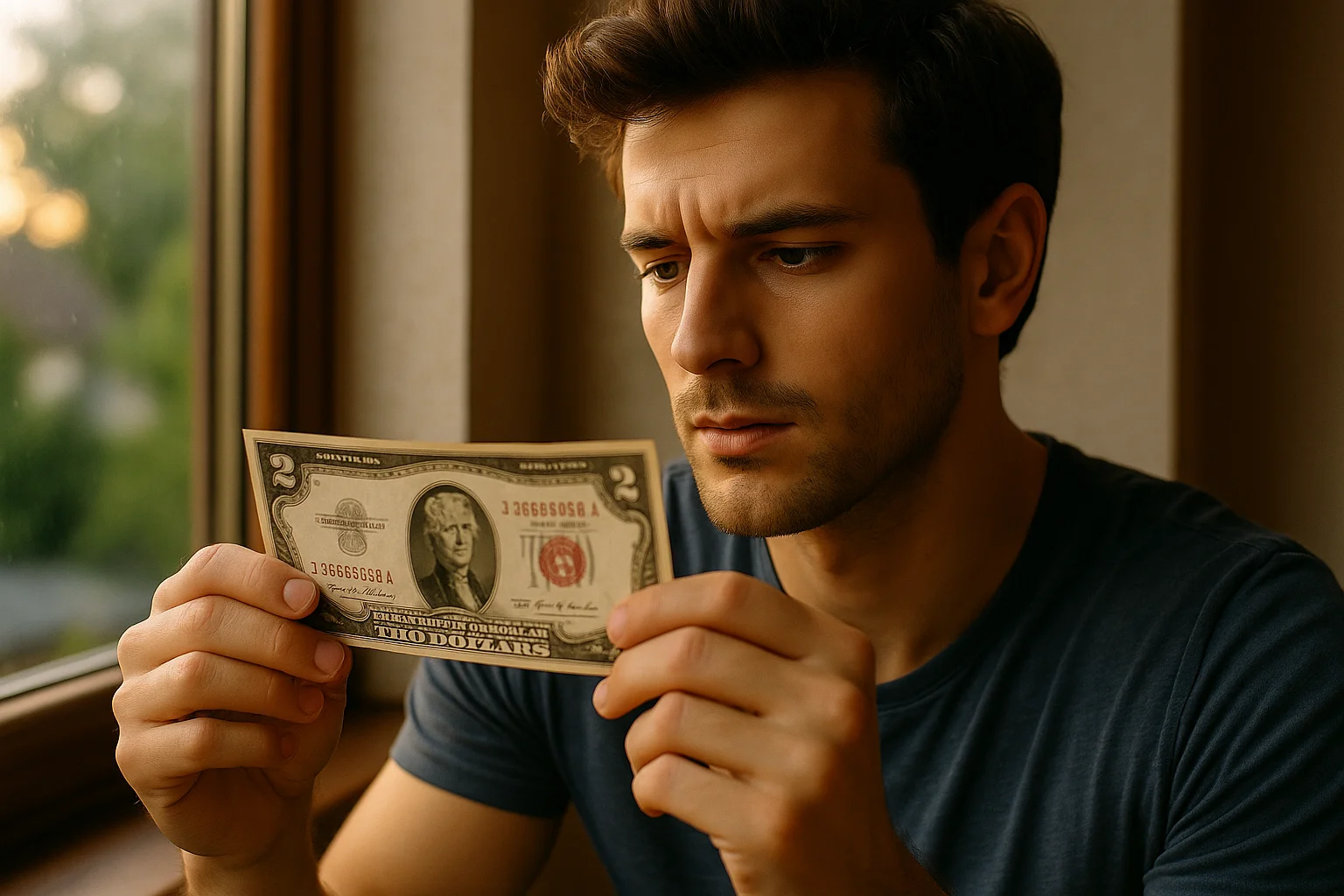\That old $2 bill tucked inside your pocket or wallet might be worth more than you think. While it may look like an average piece of old currency, collectors know there’s more to this note than meets the eye — especially if it’s from the year 1953.
Every month, thousands of collectors and curious owners turn to a 1953 $2 dollar bill serial number lookup to find out if their old note is worth more than just face value. And surprisingly often, it is. A rare serial number, an unusual printing error, or even a small star next to the number can turn an ordinary bill into a valuable collectible worth hundreds of dollars.
So, here you’ll learn exactly how to decode your bill’s serial number, understand what makes some of them valuable, and even how to get your note evaluated. You don’t need to be an experienced collector — just have a curious eye and a bit of patience are enough to get started.

What Is the 1953 $2 Bill, Anyway?
Let’s start with the basics. The 1953 $2 bill belongs to the United States Note series, not a Federal Reserve Note like most modern currency. It features Thomas Jefferson’s portrait on the front and Monticello, his Virginia estate, on the back — a design that remained largely unchanged from earlier versions.
There are four major series of the 1953 $2 bill:
- 1953
- 1953A
- 1953B
- 1953C
Each series reflects slight changes in the U.S. Treasury signatures rather than design. For instance, a 1953 bill may carry the signatures of Ivy Baker Priest (Treasurer) and George M. Humphrey (Secretary of the Treasury), while later series may feature different officials. These small changes help collectors identify and date a bill more precisely.
Tip: Look at the top right corner above Jefferson’s portrait — you’ll find the series marking there (e.g., Series 1953B). Knowing the series is the first step in determining potential collector interest.
Though these bills were widely produced, certain versions or print runs were significantly smaller, making some series rarer — especially in uncirculated or high-grade condition.
Where to Find the Serial Number (and Why It Matters)
Now, to the most important part — the serial number. This unique set of letters and numbers can turn your $2 bill into a collector’s prize.
Each 1953 $2 bill has two serial numbers: one in the top right and another in the lower left. These numbers are identical and usually consist of a prefix letter, eight digits, and a suffix letter — like A12345678B.
So what do these letters mean?
- Prefix letter – Often indicates the issuing district or printing sequence.
- Eight digits – The main serial number, where unique and collectible patterns may appear.
- Suffix letter – Used to distinguish between batches of the same number sequence.
- Star symbol (★) – Replaces the suffix letter in special “replacement notes” known as star notes, which are scarcer and more collectible.
Pro tip: If your bill’s serial number ends in a ★, don’t spend it! Star notes from 1953, especially in great condition, can be worth much more than their face value.
Cracking the Code – What Makes a Serial Number Valuable?
Not All Numbers Are Created Equal
So, you’ve located your serial number — great! But how do you know if it’s actually worth anything? Serial numbers on currency aren’t just for tracking. To collectors, certain combinations of digits are considered special, rare, or aesthetically interesting — and that’s where value starts to emerge. Some patterns are scarce by nature, while others are just cool enough to create a bidding war.
Here are the most sought-after types of serial numbers you might find on your 1953 $2 bill:
| Type | Example | Why It’s Valuable |
| Low numbers | 00000022 | The closer to #00000001, the more collectible |
| High numbers | 99999999 | Max-number bills feel final, making them desirable |
| Repeater | 45454545 | Alternating digit patterns appeal visually |
| Radar | 12344321 | Reads the same forward and backward — rare and cool |
| Binary | 01010101 | Only two digits used — like a digital code |
| Solid | 22222222 | All digits the same — extremely rare in circulation |
| Ladder | 12345678 | Digits in ascending or descending order = collector dream |
| Star Note | A00000022★ | Replacements for misprints — fewer printed, more prized |
Auction example: A 1953B star note graded PCGS MS-67 PPQ fetched a whopping $12,925 at auction — highlighting how condition and star-note status can skyrocket value. So, even if your note isn’t perfect, patterns like near-ladders or near-radars can still attract collector interest — so keep an open eye.
Condition Is King: Does Crispness Beat Rarity?
Let’s be clear: even the coolest serial number might not be worth much if the bill looks like it survived a washing machine.
Currency grading plays a massive role in value. Here are the common condition levels:
- UNC (Uncirculated): Crisp, clean, never folded — top value
- XF (Extra Fine): Slight signs of handling but very sharp
- VF (Very Fine): Light folds, minor wear
- Fine or lower: Creases, stains, tears — value drops steeply
Pro tip: Always handle collectible bills with clean hands or cotton gloves. Even finger oils can leave marks that reduce long-term value.
Visible issues that can lower the bill’s appeal and price:
- Folds or creases
- Ink marks or writing
- Tears or holes
- Stains or water damage
So yes — condition matters a lot. A pristine, common serial might outperform a rare pattern that’s been crumpled and stained.

How to Do a Serial Number Lookup the Right Way
You’ve got a potentially rare number, and your bill is in good shape — now it’s time to check what it might be worth.
Here’s how to deal with your 1953 $2 dollar bill serial number lookup like a pro:
- Compare listings on trusted auction sites like eBay (filter for “sold items”), Heritage Auctions, or Stack’s Bowers.
- Search collector forums like the Coin Community or Paper Money Collectors’ boards — many users share pricing and photos of rare notes.
- Use valuation guides such as PaperMoneyValues or printed catalogs from numismatic publishers.
- Always factor in the series and signatures. A cool number might be common in Series 1953B but rare in 1953C.
Lookup hack: A serial number alone isn’t always special — but when paired with a rare series, or an unusual combination of signatures, its value might multiply. Don’t ignore the details!
Where to Sell or Value Your $2 Bill
So, you’ve decoded the serial number, checked the condition, and maybe even discovered you’re holding a low-numbered star note. Now the big question: what should you do with it?
You can be a casual owner or budding collector, getting your note properly valued is the key first step.
Here are your top options:
- Online Auction Platforms
- eBay is the easiest starting point. Filter by “Sold Listings” to get a realistic idea of what bills like yours have sold for.
- Heritage Auctions or Stack’s Bowers cater more to serious collectors. You can submit your note for potential consignment if it’s rare or high-grade.
- What to look for: Match serial number type, series (1953, 1953A, etc.), and grade condition when comparing listings.
- Get a Second Opinion
- Local coin & currency shops often offer free or low-cost evaluations.
- Paper money collector forums and Facebook groups can give honest, experience-based opinions. Upload photos, describe the serial number, and ask away.
Appraisal Tips
- Always show both sides of the bill in clear light, including the serial number, signatures, and condition details.
- If your note is ungraded but you believe it’s in mint state, consider sending it to a professional grading service like PCGS or PMG — that sealed grade can greatly increase buyer trust and resale value.
Check Before You Spend
Most people would never give an old $2 bill a second thought. But now you know better. Whether you’re flipping through a childhood collection or spotting something interesting at a flea market, always take a second look at the serial number.
Because sometimes, the smallest numbers tell the biggest stories — and they just might put a little extra cash in your pocket. And if coins are more your thing, tools like Coin ID Scanner make it easy to identify and value interesting finds — right from your phone. So, use the right tools, be attentive and enjoy the process of collecting.